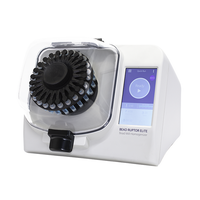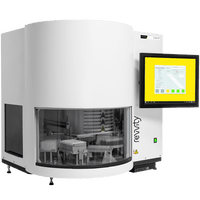What Are Small RNAs and miRNAs?
Small RNAs are a diverse class of short, non-coding RNA molecules, typically smaller than 200 nucleotides. Among these, microRNAs (miRNAs) are the most extensively studied and characterized. miRNAs are involved in the regulation of gene expression at the post-transcriptional level, playing crucial roles in controlling various cellular processes, such as development, differentiation, and response to stress. Other types of small RNAs include small interfering RNAs (siRNAs), piwi-interacting RNAs (piRNAs), and transfer RNA-derived fragments (tRFs), each of which has distinct biological functions. However, miRNAs have garnered the most attention due to their significant involvement in numerous biological pathways and diseases.
The Biological Function of miRNAs
miRNAs act as critical regulators of gene expression and cellular homeostasis. miRNAs function primarily by binding to complementary sequences on messenger RNAs (mRNAs), leading to mRNA degradation or inhibition of translation. This regulatory mechanism is vital for maintaining appropriate gene expression levels and ensuring proper cellular function. Aberrations in miRNA expression have been linked to numerous diseases, including cancer, neurodegenerative disorders, and cardiovascular conditions, making miRNAs promising biomarkers for disease diagnostics and therapeutic targets. Other small RNAs, such as siRNAs, play essential roles in gene silencing by targeting specific mRNAs, while piRNAs are primarily involved in maintaining genomic stability by suppressing transposable elements in germ cells.
NGS Applications in Small RNA and miRNA Sequencing Research
Next-Generation Sequencing (NGS) has revolutionized small RNA and miRNA-seq research by providing high-throughput, precise profiling of these molecules. Small RNA sequencing using NGS enables the identification and quantification of known and novel miRNAs, providing insights into their roles in gene regulatory networks and disease pathways. Researchers can also use NGS to explore miRNA expression patterns across different tissue types, developmental stages, or disease states, helping to uncover their functional relevance. Additionally, small RNA sequencing can be used to identify new classes of small RNAs, analyze the impact of miRNA mutations, and discover miRNA targets, offering a powerful approach for understanding the complexities of gene regulation.
Revvity's Complete Small RNA-Seq Library Preparation Workflow
Revvity provides a comprehensive small RNA-seq library preparation workflow that is designed to overcome common challenges in small RNA research, such as bias and human error. Our small RNA-seq solution minimizes the risk of sequence bias through optimized adapter ligation and amplification steps, ensuring a more accurate representation of the small RNA population in your samples. Additionally, the workflow is compatible with automation, reducing human intervention and the risk of contamination while increasing reproducibility. The automated, gel-free nature of the Revvity small RNA-seq workflow not only streamlines the library preparation process but also enables high-throughput studies, making it an ideal solution for researchers studying miRNA expression on a large scale.
Exceptional miRNA Discovery with Revvity's Solution
The optimized design of Revvity's small RNA-seq kits facilitates robust detection of both highly abundant and low-abundance miRNAs, delivering a comprehensive view of miRNA expression across samples. The workflow includes everything needed for a successful library preparation, from adapter ligation and cDNA synthesis to library amplification, all in a user-friendly format. Our approach ensures consistent and high-quality sequencing results, making it easier for researchers to achieve exceptional miRNA discovery and draw meaningful biological conclusions. Whether you are studying miRNAs for biomarker discovery, disease characterization, or functional genomics, Revvity’s small RNA-seq solutions are tailored to support your research objectives with accuracy and efficiency.
For research use only. Not for use in diagnostic procedures.

































